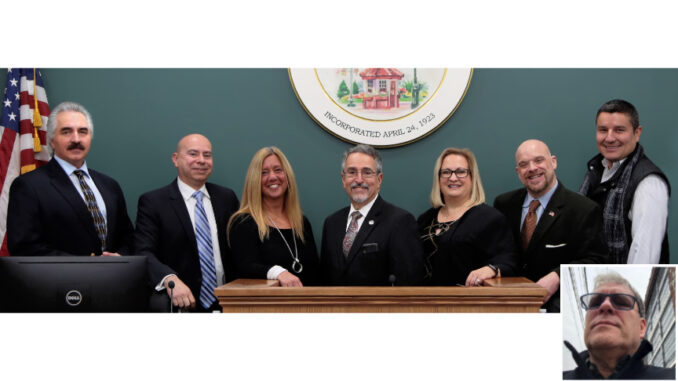
HILLSDALE—A nearly $13,000 contract was awarded to planning consultant DMR Architects to undertake a “rehabilitation investigation study” of properties near the downtown commercial area to see what potential properties may qualify for a future rehabilitation proposal.
The DMR proposal was not available prior to the meeting for public review, noted Mayor John Ruocco, who questioned why some commercial properties were included and not others. A later motion to make documents to be voted on available in advance fizzled. (See Ruocco’s letter to the editor in this issue.)
Councilman Frank Pizzella, who has spearheaded efforts to improve and revitalize the downtown, including the ongoing redevelopment efforts in the Patterson Street redevelopment zone, was absent on June 14.
Reached June 15, Pizzella told Pascack Press that the rehabilitation proposal’s approval was “perfect timing. I’m so happy that that was passed. You really want to have a downtown revitalization plan in place when you have interest in development in your town.”
He added, “When the economy comes back, you have a plan in place when the investors are ready to invest.” He said the rehabilitation plan can integrate “community standards and help revitalize the downtown. It’s important to be ahead of the economic curve to encourage developers.”
The redevelopment committee is negotiating with Claremont March development over a redeveloper’s agreement to work out details for a potential 4-story, 250-unit luxury apartment complex on 5.4 acres in the Patterson Street redevelopment zone.
Borough administrator David Troast told Ruocco that local officials can generally add in or delete properties considered for rehabilitation as the study moves along.
He said when the final study is complete, and before approving a rehabilitation plan to be sent to the Planning Board, officials must make sure that the correct properties that qualify for rehabilitation are included.
“The Borough of Hillsdale desires DMR Architects to provide Planning Services in connection with a Rehabilitation Study for the Commercial Zone and a few additional properties outside the commercial zone in order to determine if the certain properties meet one or more of the statutory criteria for rehabilitation set forth in N.J.S.A. 40A:12A in an amount not to exceed $12,700,” reads resolution 22115, approved at the June 14 meeting.
The resolution states the contract was for an amount not to exceed $12,700.
During the meeting, Ruocco said he found the properties included and excluded “most curious” and described the selections as “weird.” Troast said it was important to move forward with the study, as it would require “much interaction with the Council and the Planning Board.” Ruocco, as mayor, does not vote except in case of a tied council vote.
Troast said developing and approving a rehabilitation plan “ready to go when developers are ready to go” would help the local tax base and provide more commercial services for residents to enjoy.
According to New Jersey Rev. Statutes 40A:12A-14 (2013), the law lists three conditions for determination of need for rehabilitation:
- A significant portion of structures are in deteriorated or substandard condition, with a continuing pattern of vacancy or underutilization;
- More than half of identified housing stock is at least 50 years old, or a majority of water and sewer infrastructure is at least 50 years old and requires substantial repairs or maintenance; and
- A program of rehabilitation may be expected to prevent further deterioration and promote the overall development of the community.
Ruocco wrote Pascack Press, “When I reviewed the properties in DMR’s proposal to do the investigative study to determine if the commercial zone and some ancillary parcels meet the statutory criteria to be designated an area in need of rehabilitation, it seemed odd to me that some properties were cited as being in the study area, while others were not.”
He said, “I wondered why St. John’s Church and school, Veterans’ Park, and eight contiguous properties in the flood zone along Lafayette and Riverside were to be captured in the study (but not others along Riverside), while others along Broadway that were clearly commercial were excluded (for example), all the properties on the east side of Broadway between Park and Cross.”
